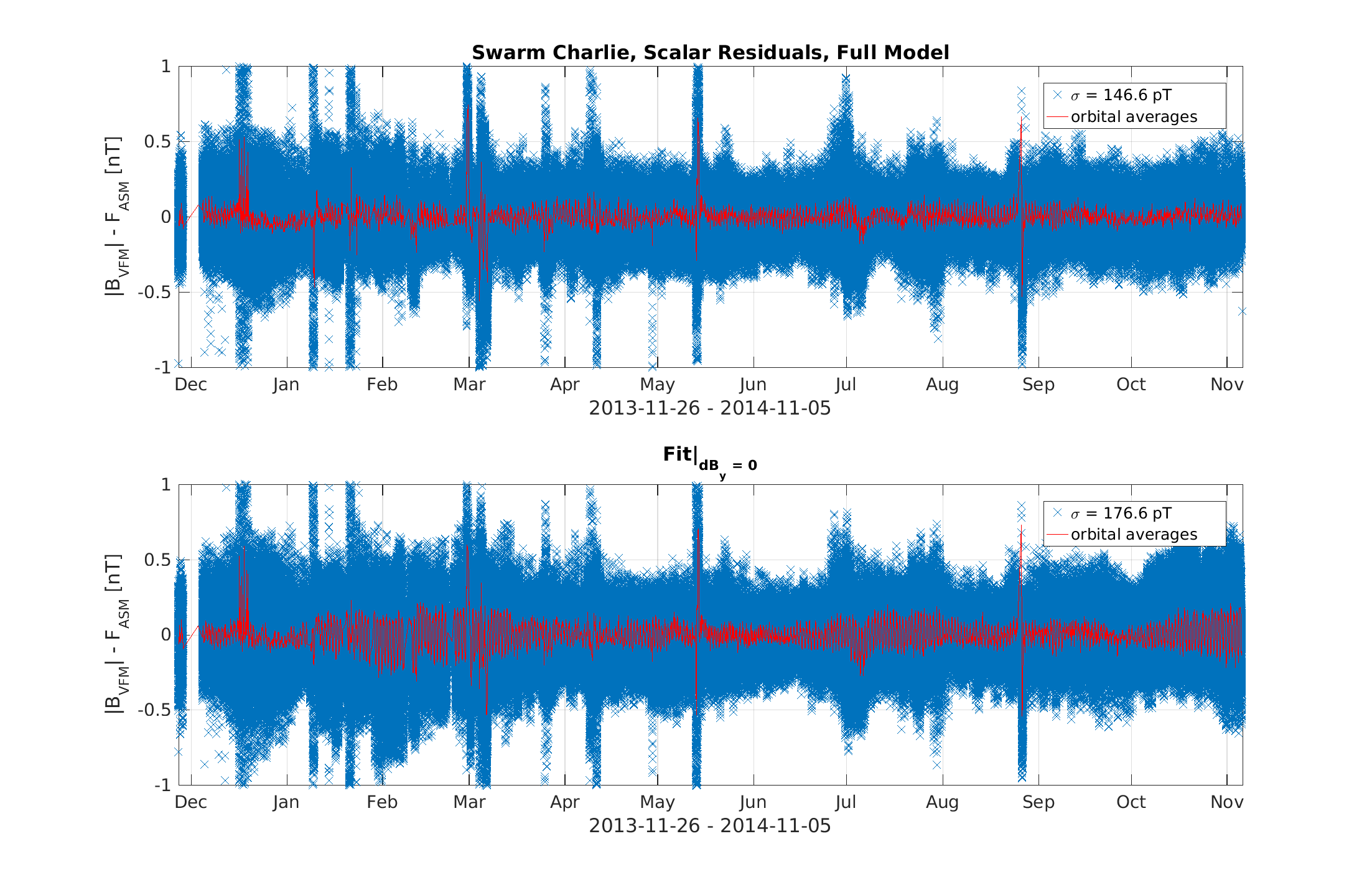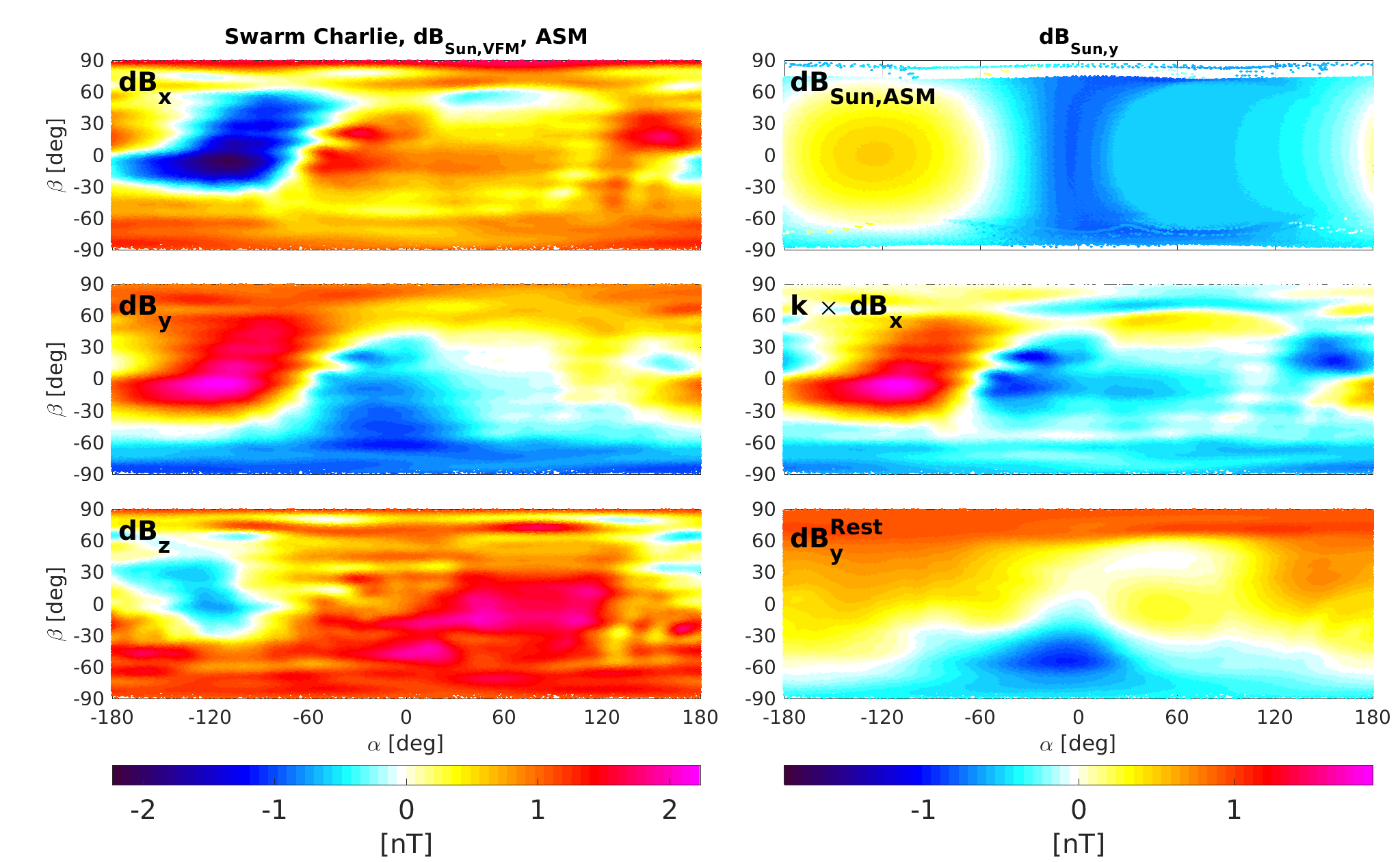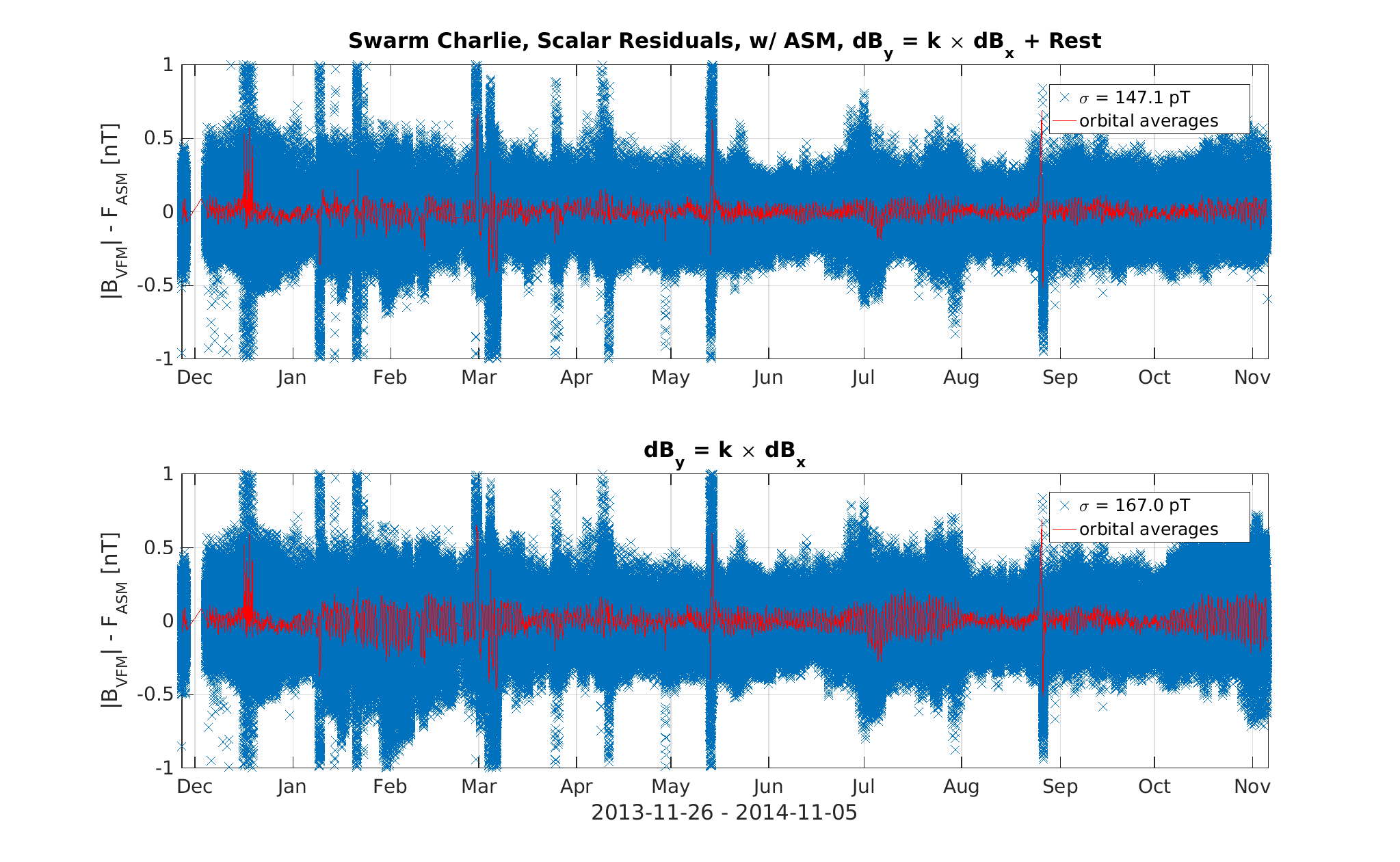

The left maps show dBSun for the full model, the top right the difference in
dBSun,y for the full model vs the
dBSun,y = k * dBSun,x + dBSun,yRest model
which is shown in the middle right plot (same colorscale as the left plots).
As seen from the lower right plot, the dBSun,yRest part is quite
small and does not contribute much to the observed scalar residuals:

The bottom plot shows the Bravo residuals with
dBSun,y = k * dBSun,x (no rest).
One noticeable difference occurs in March 2017 which is shown in detail here:

In this period, a manoeuvre was performed on Swarm Bravo, hence larger scalar residuals are to be expected, hence the two lower plots may actually reflect a more correct model of dBSun with no over-fitting

This is for the period where the ASM on Charlie was working. For the period with
scalar measurements mapped from Alpha to Charlie, forcing dBSun,y
towards zero actually improves the residual statistics:

No immediate explanation for this behaviour is found.

For Charlie, somewhat of the same structure of dBSun,yRest is
observed as was seen for Alpha (recall: dBSun,yRest for Charlie
is estimated purely using ASM data from Charlie, hence no contamination from the mapped data from Swarm Alpha): a clear dependency on the beta angle;
but for Charlie we observe some additional structure. These structures might be some
remnants of dBSun,ASM and dBSun,x which have not been properly
modelled.
Also, there are quite some small scale structures in the maps, these are probably
artefacts - they may well be reduced by refinements of the scalar calibration
(by damping of higher order terms in the SH models).
Removal of dBSun,yRest yields a significant increase in the
scalar residuals as can be seen here:
